Concept myositis means inflammation of muscle tissue. The most obvious symptom of myositis of the gastrocnemius muscle is pain in the back of the lower leg. There are several factors that trigger inflammation. Treatment at the first stage involves the removal of acute symptoms and the elimination of the original causes of the disease.
Record content:
-
1 Causes of inflammation of the gastrocnemius muscle
- 1.1 Physiological reasons
- 1.2 Pathological reasons
- 2 Types of myositis
- 3 Symptoms
- 4 Features of the course of the disease in children and referral to a pediatrician
- 5 Complications of myositis
- 6 First aid for gastrocnemius myositis
-
7 Diagnostics
- 7.1 Laboratory research
- 7.2 Instrumental diagnostics
-
8 Treatment
- 8.1 Local preparations
- 8.2 Antibiotics and pain relievers
- 8.3 Other therapies
- 9 Folk remedies
- 10 What is not recommended?
- 11 Forecast
- 12 Video about myositis
Causes of inflammation of the gastrocnemius muscle
The causes of inflammation of the gastrocnemius muscle can be physiological and pathological in nature.
Physiological reasons
The gastrocnemius biceps muscle itself consists of an internal medial and external lateral muscle head. Above, both components have a connection with the femur, below, together with other muscles, they pass into the Achilles tendon.
One of the causes of myositis is the presence of muscle microtraumas, the likelihood of which increases with high physical exertion.
Painful sensations after hard work or intense sports training in this case are directly related to the formation of lactic acid.
 But the very fact of acid formation is not a sign of myositis, since any physical activity is always accompanied by a glucose oxidation reaction.
But the very fact of acid formation is not a sign of myositis, since any physical activity is always accompanied by a glucose oxidation reaction.
With muscle microtraumas, pain is expressed by burning sensation and cramps. Tense muscles squeeze blood vessels, which slows down blood flow and metabolism. Together with internal hemorrhages, these factors cause swelling and trigger the inflammatory process.
Prolonged tension and inflammation of the calf muscles can be associated not only with physical labor or sports, but also with wearing uncomfortable shoes with high heels, with hypothermia of the legs and with the presence of open wounds and bruises of muscle tissue.
Pathological reasons
Myositis can be caused by the presence of autoimmune diseases and an exacerbation viral and bacterial infectious diseases, which include:
- flu;
- ARVI;
- tuberculosis;
- typhoid;
- syphilis;
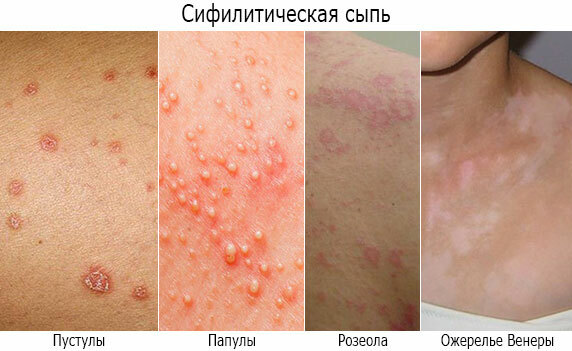
- brucellosis;
- erysipelas of the lower leg.
Also, risk factors are drug intoxication and alcohol poisoning.
Types of myositis
The division of myositis by type is made according to the following criteria:
- Etiological signs.
The causes of the disease can be infectious, rheumatic and traumatic.
- Localization of inflammation.
Inflammation can be total in nature, be localized in the tendons, in the lateral or medial head.
- Stage of the disease.
In the acute stage of myositis, clinical symptoms are pronounced. It is with this stage that most of the calls to medical help are associated. The second stage is characterized by a weakening of acute manifestations. With untreated myositis, the disease turns into a chronic stage, which subsequently threatens with weakening and atrophy of the calf muscles.
Dermatomyositis, neuromyositis, polymyositis, polyfibromyositis and myositis ossifying are considered separately.
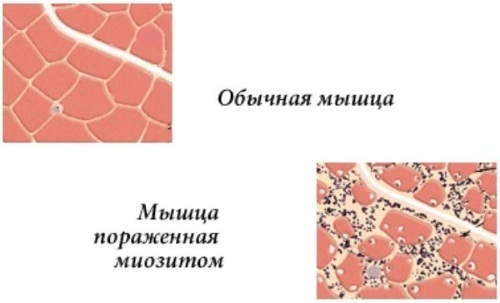
Symptoms of ossifying myositis of the gastrocnemius muscles are associated with the formation of ossification in soft tissues. Treatment of this form of the disease often requires surgery.
Distinguish between traumatic ossifying and progressive ossifying myositis. Traumatic can occur as a result of one significant injury or repeated microtrauma of the muscle.
Progressive ossifying myositis is also called fibrodysplasia. Usually, ossifying progressive fibrodysplasia appears already in the first year of a child's life, but it begins its development even during the formation of the fetus, since it has a genetic conditionality.
Symptoms
Myositis of the gastrocnemius muscles, the symptoms and treatment of which are considered only comprehensively, may require the use of different therapeutic measures, since the signs of different types of myositis have their own differences.
The main symptom of the disease is manifested by intense pain in the back of the lower leg. Increased pain is felt when walking, when pressing, when bending and extending the knee joint. On tactile examination, a seal is felt.
A purulent inflammatory process is characterized by the presence of swelling, redness of the skin, fever, headache and general weakness.
If the disease proceeds in a chronic form, then the pain becomes aching in nature when walking and trying to squat or lift weights. Sleep at night is often interrupted by the appearance of a sharp, painful cramp. The calf muscle decreases in size. This is clearly seen when comparing it with a similar muscle on a healthy leg.
The nature of pain depends on the place of concentration of the inflammatory process. So, inflammation of the medial head of the muscle concentrates pain in the posterior inner part of the lower leg, but at the same time the sensation of pain is also given to the lower part of the thigh.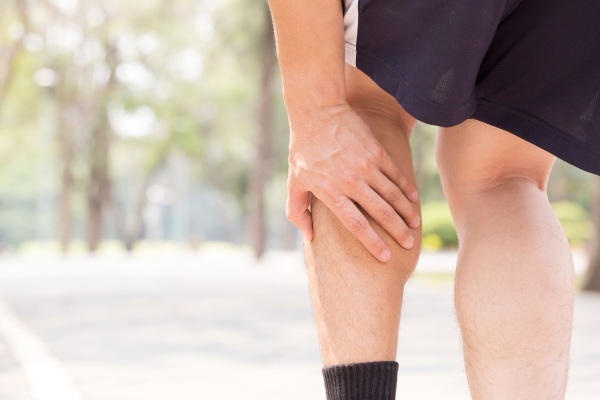
The lateral head is adjacent to the peroneal nerve, therefore, with its inflammation, the pain is more intense. Feelings of numbness and burning in the outer part of the lower leg may be present.
With inflammation of the upper tendon of the biceps muscle, pain is felt in the lower leg, lower thigh and knee. Painful sensations with inflammation of the Achilles tendon are noted in the lower leg and heel.
Features of the course of the disease in children and referral to a pediatrician
Myositis of the gastrocnemius muscles, the symptoms and treatment of which are similar in adults and children, still have their own distinctive features. The primary examination of the child should be carried out only by a pediatrician. Since, depending on the age of the patient, the dosage of medications and the duration of physiotherapy procedures change.
Intrauterine infections, which can be transmitted both directly from mother to child and during childbirth, are added to the risk factors for the disease in newborns.
At the age of 3 years, while the child cannot himself indicate the symptoms that bother him, myositis is detected by swelling of soft tissues, redness on the skin, an increase in body temperature and a painful reaction to palpation muscles.
An accurate diagnosis is made by a pediatrician only on the basis of tests and a comprehensive examination by a neurologist, surgeon and orthopedist. Often, an orthopedist-traumatologist becomes the main attending physician for inflammation of the gastrocnemius muscle.
If getting muscle microtraumas is more likely at the age of over 3 years, then hypothermia and infection with viral and bacterial infections are possible at any age.
Complications of myositis
The neglected state of myositis is dangerous not only by the transition of the disease into a chronic form with its threat of muscle atrophy, but also by the fact that inflammatory processes gradually affect neighboring muscle groups. Prolonged neglect of treatment can lead to lifelong disability.
First aid for gastrocnemius myositis
If pain symptoms appear in the dorsal region of the lower leg, the following actions must be taken:
- Provide the patient with complete rest. Any physical activity, including walking, should be excluded here.
- If acute pain is accompanied by severe cramps, then you can first pull the foot up and make massaging movements from the heel to the back of the knee joint. This will improve blood flow and help relieve the cramp.

- The person should lie or sit with the lower leg in a horizontal fixed position.
- Antispasmodics are used to relieve pain.
- After taking emergency measures, you should immediately seek medical attention.
Diagnostics
Myositis of the gastrocnemius muscle, the symptoms and treatment of which should be under the supervision of a therapist, you first need to confirm or refute by the methods of obligatory laboratory and instrumental diagnostic activities. On the basis of the initial examination and questioning of the patient, one can get only a general idea of the disease and make a preliminary diagnosis.
Laboratory research
In the course of laboratory tests, a general, biochemical and serological blood test is performed.
With an infectious purulent inflammatory process, the number of neutrophils, leukocytes increases and the erythrocyte sedimentation rate changes. These indicators are detected during a general blood test.
As a result of a biochemical blood test, the level of CPK MV is determined. It is an enzyme called creatiphosphokinase. The defeat of muscle tissue is accompanied by an increase in the CPK index. In a normal state, the CPK MV indicator should be from 0 to 24 U / l. An increase in C-reactive protein levels is a sign of autoimmune inflammation.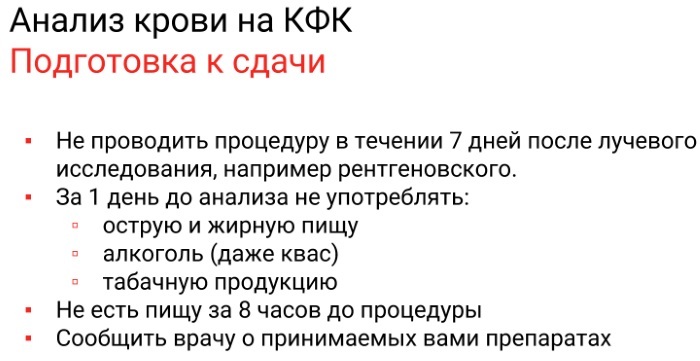
Serologic testing is done to determine the presence of antibodies. Their content in the blood indicates the ongoing inflammatory processes.
Instrumental diagnostics
Instrumental diagnostic methods include the use of EMG, fluoroscopy and MRI. With the help of tomography, it is possible to determine the sites of inflammation and purulent sinuses.
Electromyographic diagnostics gives an idea of the current state of the muscles. Fluoroscopy determines possible fractures and cracks in the bone, the presence of calcifications, which are a clear sign of ossifying myositis.
Treatment
The acute stage of myositis requires the following therapeutic measures:
- An orthosis or splint is used to fix the lower leg, ankle and knee.
- The use of anti-inflammatory pain relievers and antispasmodics. In case of acute pain, novocaine blockade is performed.
- Measures to improve blood circulation.
- Local application of pain relieving and warming ointments.
- Physiotherapy in the form of UHF, iontophoresis and magnetotherapy.
- If the inflammation is purulent in nature, then the treatment requires surgical intervention, in which the opening and treatment of the purulent cavity is performed. In this case, the use of antibiotics is prescribed.
After the acute period subsides, therapeutic measures of a restorative nature are prescribed, which include massage, physiotherapy procedures and physiotherapy exercises.
For chronic myositis, spa treatment with mineral baths is used. With ossification and muscle atrophy, an operation is performed to transplant an autograft.
Local preparations
The main purpose of using creams, gels and ointments is to relieve muscle tension and stimulate blood circulation.
Among the most famous drugs are:
- "Fastum-gel", characterized by a high content of active substances. It is applied no more than 1-2 times a day.
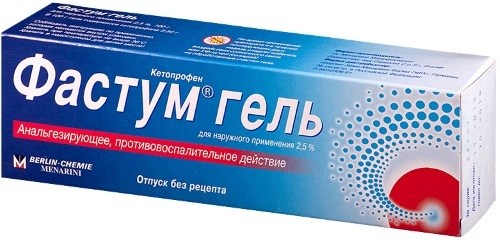
- Traumeel S is a cream for relieving inflammation. It is applied no more than 5 times a day.
- Espol Warming Cream can be applied 3 times a day.
- "Gevkamen" is rubbed 3 times a day to relieve pain.
- The complex preparation "Deep Relief Gel 5%" is applied 4 times a day.
Treatment involves the use of immunosuppressants, glucocorticoids, antibiotics, anti-inflammatory and vasodilating drugs.
These include:
- Ketonal;
- Nurofen;
- Diclofenac;
- Finalgon;
- Apizatron;
- Nikoflex.
Preparations based on snake and bee venom are contraindicated for children. Ointments containing ibuprofen are prescribed for patients over 14 years of age. Ointments and gels containing ketoprofen or dimethyl sulfoxide can be used in children over 12 years of age. Means such as "Sanitas" and "Mentholatum Blam" are used upon reaching the age of 4 years and older.
Antibiotics and pain relievers
The main drugs for the relief of acute symptoms of the disease are non-steroidal anti-inflammatory drugs. They come in tablets and ampoules for injection.
Non-steroidal drugs include:
- diclofenac;

- pyrosikam;
- naproxen;
- nimesulide;
- aceclofenac;
- dexketoprofen;
- meloxicam;
- rofecoccib;
- indomethacin;
- ibuprofen.
Ibuprofen-based drugs relieve pain, have antipyretic and anti-inflammatory effects. Among them there are also preparations created especially for children. One of them is "Ibufen Junior"
The dosage of the drug, depending on the age of the child:
| Child's age | Dosage (ml) |
| 1-3 | 5 |
| 4-6 | 7,5 |
| 7-9 | 10 |
| 10-12 | 15 |
Contraindications here are:
- an allergic reaction to aspirin;
- disruption of the digestive tract, kidneys and liver;
- decreased platelet count in the blood.
Antibiotics are used for purulent course of the disease and for myositis caused by infectious diseases. It uses the means of the tetracycline, cephalosporin and penicillin series. To relieve muscle spasm, muscle relaxants Sirdalut and Mydocalm are sometimes prescribed. But these drugs relax all skeletal muscles, which is not acceptable in all cases.
For the treatment of dermatomyositis and polymyositis, glucocorticosteroids are used. The main drug in this group is prednisolone. In addition to relieving swelling and inflammation, it has antiallergic and immunosuppressive effects.
With ossifying myositis, hydrocortisone is prescribed. It inhibits the processes that contribute to the formation of calcifications. It is injected into the lesion site together with novocaine.
Other therapies
Myositis of the gastrocnemius muscles, the symptoms and treatment of which involves the use of drugs and physiotherapeutic procedures, sometimes also requires surgical intervention. With the help of operations, purulent formations in the muscles are opened and seals in the form of calcifications are removed.
Comprehensive treatment must necessarily include physiotherapy procedures. They are prescribed depending on the stage and course of the disease.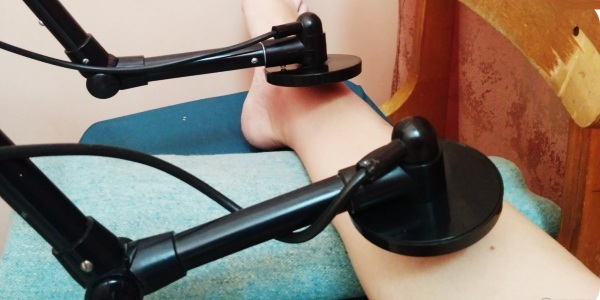
If myositis is of an acute purulent nature, then a course of UHF therapy is prescribed. In the absence of purulent formations, heating with warm baths and paraffin wrapping, electrophoresis, mud therapy and phototherapy are added to the UHF.
In the chronic stage of myositis, radon baths, phototherapy, mud treatment, steam showers, electrophoresis with a solution of iodine, novocaine and ichthyol are used.
Massage and physiotherapy exercises are also included in the range of therapeutic measures. With purulent myositis, massage is contraindicated. All exercise therapy exercises are selected depending on the current state of each patient. The rate of exercise increases gradually, overvoltage is unacceptable here. Swimming lessons have a good health-improving effect.
Folk remedies
Treatment with folk remedies involves finding the affected leg in a calm state. Rubbing, compresses and ointments are used here.
Some folk recipes:
- Honey compress. Grated radish or horseradish is added to honey in a ratio of 1/4. The resulting mass is applied to the site of the lesion, covered with a film and covered with a blanket. After 1.5-2 hours, the mixture is removed, the leg is washed with warm water and wrapped in a woolen cloth. The procedure is done before bedtime.
-
Potato compress. Potatoes are washed and boiled in a peel. After cooling down to about 50O, knead it, spread it on a sore spot and fix it with a bandage. An hour later, the cooled mass is removed, the leg is wiped with alcohol and wrapped in a warm cloth. This procedure is also done before bedtime.
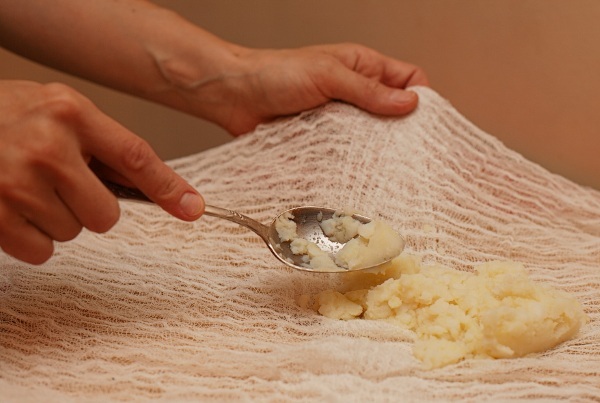
- A mixture of bay leaves and sunflower oil. The bay leaf is crushed to a powdery state. 2 tablespoons of powder are mixed with 2 tablespoons of oil. The mixture should be infused for 10 days. The composition is intended for rubbing.
- Herbal compress. The herbs of sweet clover, chamomile, linden and horsetail are placed in equal proportions in cheesecloth. Gauze is tied in a bag and brewed in boiling water. Then the bag is removed, squeezed a little and allowed to cool to room temperature. The place of application on the leg is covered with a film and tied with a warm cloth.
What is not recommended?
Any pharmacological and folk remedies cannot be used without the permission of the attending physician. For example, a warming compress with purulent myositis will only lead to an exacerbation. It is necessary to immediately give up alcoholic beverages, limit the intake of fatty and salty foods.
Attempts to develop the gastrocnemius muscle by active sports activities are also contraindicated. During treatment, the leg should be given maximum rest. If a person was previously fond of hardening procedures, then now such activities should be suspended.
Forecast
Rational treatment of most forms of myositis has a positive prognosis. Complications are possible when the inflammation of muscle tissue is caused by autoimmune diseases, in which the body's own immune system is disrupted. In this case, the therapist prescribes an examination by an immunologist or endocrinologist.
Progressive myositis ossifying has the most unfavorable prognosis. Today it is considered incurable.
Some of the symptoms of myositis of the calf muscles are similar to signs of other diseases, the treatment of which involves the use of their own therapeutic methods. Timely referral to a local therapist will improve the result of treatment of any disease.
Video about myositis
Causes, symptoms and treatment of myositis:



